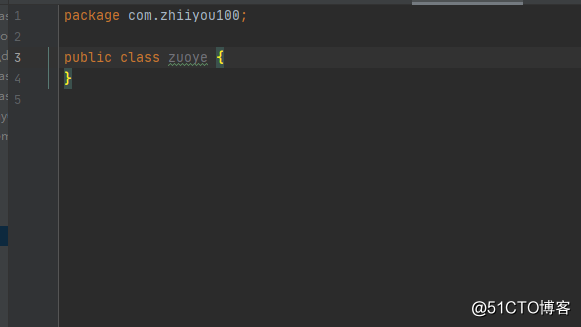PHP文件缓存类
<?php class Cache { /** * $dir : 缓存文件存放目录 * $lifetime : 缓存文件有效期,单位为秒 * $cacheid : 缓存文件路径,包含文件名 * $ext : 缓存文件扩展名(可以不用),这里使用是为了查看文件方便 */ private $dir; private $lifetime; private $cacheid; private $ext; /** * 析构函数,检查缓存目录是否有效,默认赋值 */ function __construct($dir=’’,$lifetime=1800) { if ($this--->dir_isvalid($dir)) { $this->dir = $dir; $this->lifetime = $lifetime; $this->ext = ’.Php’; $this->cacheid = $this->getcacheid(); } } /** * 检查缓存是否有效 */ private function isvalid() { if (!file_exists($this->cacheid)) return false; if (!(@$mtime = filemtime($this->cacheid))) return false; if (mktime() - $mtime > $this->lifetime) return false; return true; } /** * 写入缓存 * $mode == 0 , 以浏览器缓存的方式取得页面内容 * $mode == 1 , 以直接赋值(通过$content参数接收)的方式取得页面内容 * $mode == 2 , 以本地读取(fopen ile_get_contents)的方式取得页面内容(似乎这种方式没什么必要) */ public function write($mode=0,$content=’’) { switch ($mode) { case 0: $content = ob_get_contents(); break; default: break; } ob_end_flush(); try { file_put_contents($this->cacheid,$content); } catch (Exception $e) { $this->error(’写入缓存失败!请检查目录权限!’); } } /** * 加载缓存 * exit() 载入缓存后终止原页面程序的执行,缓存无效则运行原页面程序生成缓存 * ob_start() 开启浏览器缓存用于在页面结尾处取得页面内容 */ public function load() { if ($this->isvalid()) { echo ' '; //以下两种方式,哪种方式好????? require_once($this->cacheid); //echo file_get_contents($this->cacheid); exit(); } else { ob_start(); } } /** * 清除缓存 */ public function clean() { try { unlink($this->cacheid); } catch (Exception $e) { $this->error(’清除缓存文件失败!请检查目录权限!’); } } /** * 取得缓存文件路径 */ private function getcacheid() { return $this->dir.md5($this->geturl()).$this->ext; } /** * 检查目录是否存在或是否可创建 */ private function dir_isvalid($dir) { if (is_dir($dir)) return true; try { mkdir($dir,0777); } catch (Exception $e) { $this->error(’所设定缓存目录不存在并且创建失败!请检查目录权限!’); return false; } return true; } /** * 取得当前页面完整url */ private function geturl() { $url = ’’; if (isset($_SERVER[’REQUEST_URI’])) { $url = $_SERVER[’REQUEST_URI’]; } else { $url = $_SERVER[’Php_SELF’]; $url .= empty($_SERVER[’QUERY_STRING’])?’’:’?’.$_SERVER[’QUERY_STRING’]; } return $url; } /** * 输出错误信息 */ private function error($str) { echo $str; }}?> demo.php
<php/* * 使用方法举例 ------------------------------------Demo------------------------------------------- require_once(’cache.inc.php’); $cachedir = ’./Cache/’; //设定缓存目录 $cache = new Cache($cachedir,10); //省略参数即采用缺省设置, $cache = new Cache($cachedir); if ($_GET[’cacheact’] != ’rewrite’) //此处为一技巧,通过xx.Php?cacheact=rewrite更新缓存,以此类推,还可以设定一些其它操作 $cache->load(); //装载缓存,缓存有效则不执行以下页面代码 //页面代码开始 echo date(’H:i:s jS F’); //页面代码结束 $cache->write(); //首次运行或缓存过期,生成缓存 ------------------------------------Demo2------------------------------------------- require_once(’cache.inc.php’); $cachedir = ’./Cache/’; //设定缓存目录 $cache = new Cache($cachedir,10); //省略参数即采用缺省设置, $cache = new Cache($cachedir); if ($_GET[’cacheact’] != ’rewrite’) //此处为一技巧,通过xx.Php?cacheact=rewrite更新缓存,以此类推,还可以设定一些其它操作 $cache->load(); //装载缓存,缓存有效则不执行以下页面代码 //页面代码开始 $content = date(’H:i:s jS F’); echo $content; //页面代码结束 $cache->write(1,$content); //首次运行或缓存过期,生成缓存 ------------------------------------Demo3------------------------------------------- require_once(’cache.inc.php’); define(’CACHEENABLE’,true); if (CACHEENABLE) { $cachedir = ’./Cache/’; //设定缓存目录 $cache = new Cache($cachedir,10); //省略参数即采用缺省设置, $cache = new Cache($cachedir); if ($_GET[’cacheact’] != ’rewrite’) //此处为一技巧,通过xx.Php?cacheact=rewrite更新缓存,以此类推,还可以设定一些其它操作 $cache->load(); //装载缓存,缓存有效则不执行以下页面代码 } //页面代码开始 $content = date(’H:i:s jS F’); echo $content; //页面代码结束 if (CACHEENABLE) $cache->write(1,$content); //首次运行或缓存过期,生成缓存*/?>
相关文章:

 网公网安备
网公网安备